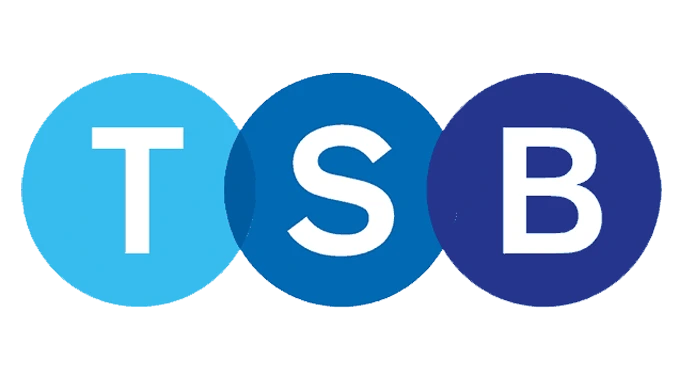About This Course
The Microsoft Azure DevOps Solutions Masters Program & Certification is a comprehensive training program that equips you with the skills and knowledge required to become an Azure DevOps Solutions expert. You’ll learn Continuous Integration and Continuous Delivery (CI/CD), Infrastructure as Code (IaC), Configuration Management, Monitoring and Logging, Cloud Computing, Containers (Docker and Kubernetes), Virtualization, Agile and DevOps methodologies, Collaboration and Communication tools (including Git and Jenkins), Security and Compliance, Release Management, Incident Management, Automation, Testing, and Quality Assurance (including Ansible, Terraform). This program will provide you with a strong foundation in deploying, managing, and monitoring DevOps solutions and services on the Azure platform, and prepare you for the Microsoft Azure DevOps Solutions certification exam.
Microsoft Azure DevOps Course Syllabus
Fill out a form, and get PDF curriculum delivered straight to your inbox. Accelerate your learning journey on our platform
Building a Foundation for Cloud Computing & Azure
LIVE TRAINING
Learning Objective: In this training, participants will develop a solid understanding of cloud computing concepts, principles, and best practices. They will learn about different cloud deployment models, service models, and key benefits of cloud computing. The objective is to equip participants with the knowledge and skills to make informed decisions and effectively utilize cloud resources in their organizations.
Course Content
- Introduction to Cloud Computing and its Advantages
- Cloud Service Models: IaaS, PaaS, SaaS
- Cloud Deployment Models: Public, Private, Hybrid
- Introduction to Azure
- Azure Account Creation & Free Tier Limitations Overview
Linux in Azure DevOps
LIVE TRAINING
Learning Objective: Linux in Azure DevOps is to develop proficiency in managing and configuring Linux-based systems within the Azure DevOps environment. This includes gaining knowledge of Linux command line operations, understanding the principles of system administration, and learning how to deploy and maintain Linux-based applications and services in Azure DevOps.
Course Content
Linux Command Line Basics:
- Introduction to the Linux terminal and shell
- File and directory management
- File permissions and ownership
- Package management with package managers (e.g., apt, yum)
- Managing processes and services
Linux System Administration:
- User and group management
- Network configuration and troubleshooting
- Disk management and storage technologies
- System monitoring and performance tuning
- Backup and recovery strategies
Linux in Azure DevOps:
- Creating and configuring Linux virtual machines in Azure
- Integrating Linux systems with Azure DevOps pipelines
- Deploying Linux-based applications using Azure DevOps
- Continuous integration and continuous deployment (CI/CD) for Linux applications
- Infrastructure as Code with Linux and Azure Resource Manager templates
Python in Azure DevOps
LIVE TRAINING
Learning Objective: Python in Azure DevOps is to develop proficiency in leveraging the Python programming language within the Azure DevOps ecosystem. This includes understanding how to write Python scripts and applications, integrating Python-based workflows into Azure DevOps pipelines, and automating various aspects of the software development lifecycle using Python.
Course Content
Python Programming Fundamentals:
- Variables, data types, and basic operations
- Control structures (if-else, loops)
- Functions and modules
- Exception handling and error reporting
- Working with files and directories
Python Development Tools and Practices:
- Setting up a Python development environment
- Using virtual environments for project isolation
- Package management with pip
- Testing frameworks and writing unit tests
- Debugging and logging techniques
Python in Azure DevOps:
- Integrating Python scripts and applications into Azure DevOps pipelines
- Writing custom tasks and extensions in Python
- Automating build, test, and deployment processes with Python
- Version control and collaboration with Python projects in Azure DevOps
- Monitoring and logging with Azure services and Python libraries
Exploring Azure Architecture and Services
LIVE TRAINING
Learning Objective: This training will enable participants to explore the architecture and services offered by Microsoft Azure. Participants will gain hands-on experience with key Azure services and understand how they can be utilized to design and build scalable, reliable, and secure cloud solutions. The objective is to empower participants to leverage Azure’s capabilities effectively and make informed architectural decisions.
Course Content
- Azure Resource Manager and Resource Groups
- Virtual Machines and Infrastructure as a Service (IaaS)
- Azure App Service and Platform as a Service (PaaS)
- Azure Storage and Data Services
- Azure Networking and Virtual Networks
- Azure Identity and Access Management
- Azure Functions and Serverless Computing
- Azure Databases and Analytics Services
- Azure DevOps and CI/CD Pipelines
Effective Azure Management and Governance
LIVE TRAINING
Learning Objective: This training focuses on equipping participants with the skills and knowledge to effectively manage and govern their Azure environments. Participants will learn about various Azure management tools, techniques, and best practices to optimize resource usage, ensure security and compliance, and manage costs. The objective is to enable participants to efficiently manage their Azure resources and ensure the stability and security of their cloud infrastructure.
Course Content
- Azure Management Portal and Azure CLI
- Azure Governance and Resource Organization
- Azure Policy and Role-Based Access Control (RBAC)
- Azure Monitoring and Diagnostics with Azure Monitor
- Azure Security Best Practices and Threat Detection
- Azure Backup and Disaster Recovery
- Azure Cost Management and Optimization
- Azure Automation and Infrastructure as Code
- Azure Governance and Compliance Tools
Mastering Azure Compute
LIVE TRAINING
Learning Objective: By the end of the training, learners will be able to effectively manage user access and permissions in Azure Active Directory (Azure AD) using RBAC, create custom roles, utilize Azure AD groups, invite guest users, and enforce multi-factor authentication (MFA) for enhanced security.
Course Content
- Azure Virtual Machines (VMs)
- Azure App Service
- Azure Container Instances
- Azure Kubernetes Service (AKS)
- Azure Functions
- Azure Batch
- Azure Virtual Machine Scale Sets
- Azure Logic Apps
- Azure Service Fabric
- Azure Durable Functions
Azure Active Directory (Azure AD)
LIVE TRAINING
Learning Objective: By the end of the training, learners will be able to effectively manage user access and permissions in Azure Active Directory (Azure AD) using RBAC, create custom roles, utilize Azure AD groups, invite guest users, and enforce multi-factor authentication (MFA) for enhanced security.
Course Content
- Overview of Azure AD
- Creating Users in Azure AD
- Role Based Access Control (RBAC)
- Reader Role
- Contributor Role
- Resource Group Level (Owner Role)
- Subscription Level
- User Access Administrator Role
- Custom Roles
- Azure AD Group
- Azure AD Roles
- Azure AD Custom Domain
- Inviting Guest Users
- Bulk User Creation
- Multi-Factor Authentication (MFA)
Azure Networking
LIVE TRAINING
Learning Objective: Gain a comprehensive understanding of Azure Networking components and their configurations to design and manage secure and efficient network infrastructures in Azure.
Course Content
- VNET Creation and Subnet Configuration
- Bastion Host and NAT Gateway
- Network Security Group (NSG)
- Azure Load Balancer (Public and Private)
- Application Gateway (Basic and Multi-Site)
- Azure VNET Peering
- Virtual Private Network (VPN) Gateway and Point-to-Site VPN Connection
- Network Watcher and Troubleshooting Tools
- Route Table (System and Custom)
- Service Endpoint
Azure Cloud Services
LIVE TRAINING
Learning Objective: Gain comprehensive knowledge and practical skills in leveraging Azure DNS Zone, Traffic Manager, Database services, Application Services, Monitoring Tools, and Security Options in Azure. By completing this training, participants will be equipped with the ability to effectively configure and manage DNS services, optimize traffic routing and load balancing, implement and manage databases, deploy and manage cloud-native applications, utilize monitoring tools for actionable insights, and implement robust security measures to protect Azure infrastructure and applications.
Course Content
- Managing Azure DNS Zone(Domain Name Service)
- Optimizing Traffic with Azure Traffic Manager
- Unlocking Database Capabilities in Azure
- Exploring Azure Application Services
- Monitoring and Diagnostics with Azure
- Securing Your Azure Infrastructure
Migration & Transfer Services
LIVE TRAINING
Learning Objective: Develop proficiency in leveraging Azure migration and transfer services to efficiently and securely migrate on-premises workloads, databases, and data to the Azure cloud. By completing this training, participants will gain the skills necessary to plan, execute, and manage successful migration projects, ensuring minimal downtime, data integrity, and optimal performance in the Azure environment.
Course Content
- Azure Database Migration Service
- Azure Site Recovery
- Azure Data Box
- Azure Data Migration
- Azure File Sync
- Azure Database for MySQL/PostgreSQL Migration.
Azure Services for DevOps
LIVE TRAINING
Learning Objective: Gain a comprehensive understanding of Azure Services for DevOps and its practical application in managing projects, utilizing source code management, and implementing continuous integration and deployment using Azure Pipelines.
Course Content
- Introduction to DevOps
- Git Version Control in DevOps
- Managing Projects with Azure Boards
- Source Code Management with Azure Repos
- Continuous Integration & Deployment with Azure Pipelines
DevOps Tools
LIVE TRAINING
Learning objective: Gain proficiency in utilizing DevOps tools and technologies to streamline software development and deployment processes, enabling efficient containerization with Docker, orchestration and scaling using Kubernetes, infrastructure management with Ansible, monitoring and alerting through Nagios, and infrastructure provisioning with Terraform.
Course Content
- Docker Containerization in DevOps
- Orchestration and Scaling with Kubernetes
- Infrastructure as Code with Ansible
- Monitoring and Alerting with Nagios
- Infrastructure Provisioning with Terraform
Tools Covered




















Job market overview

Ready to launch your career as a DevOps Engineer?
The job market outlook is positive, and with salaries ranging from $104,854 to $133,133 per year, this career path offers a promising future. The Bureau of Labor Statistics (BLS) projects a 21% growth rate for software developers between 2018 and 2028, which is higher than the median growth rate for all occupations. Our comprehensive course is designed to equip you with the latest industry trends and insights into current hiring patterns, as well as the skills and knowledge required to excel in your role as a DevOps Engineer. You’ll also learn the latest tools and technologies used by industry professionals. With our interactive and collaborative training program, you’ll have the opportunity to learn from experienced DevOps professionals and network with like-minded individuals.
Don’t wait, enroll now and start your journey to becoming a successful DevOps Engineer!
What you will learn
By the end of this course, you should be able to use Azure DevOps services and tools to implement efficient and reliable CI/CD pipelines, manage infrastructure using IaC and containers, automate deployments and configurations, monitor and log infrastructure and applications, and implement security best practices throughout the software development lifecycle.
Course Format
- Live classes
- Hands-on trainings
- Mini-projects for every module
- Recorded sessions (available for revising)
- Collaborative projects with team mates in real-world projects
- Demonstrations
- Interactive activities: including labs, quizzes, scenario walk-throughs
What this course includes
- 200+hrs of live classes
- Collaborative projects
- Slide decks, Code snippets
- Resume preparation from the 2nd week of course commencement
- 1:1 career/interview preparation
- Soft skill training
- On-call project support for up to 3 months
- Certificate of completion
- Unlimited free access to our exam engines
Our students work at












Prerequisites
- CS/IT degree or prior IT experience is highly desired
- Basic programming and cloud computing concepts
- Knowledge of DevOps culture
Why should you take the course with us
- Project-Ready, Not Just Job-Ready!
- Authentic Data For Genuine Hands-On Experience
- Personalized Career Preparation
- Multiple Experts For Each Course
- On-Call Project Assistance After Landing Your Dream Job
- A Vibrant and Active Community
FAQs
Course Completion Certification

Upfront Payment
27% off
Pay upfront and save 27% on tuition fee
INR 75,000
INR 55,000
Fill the form below and a Learning Advisor will get back to you.
Monthly Payment
20% off
Pay monthly and save 20% on tuition fee
INR 10,000
Total up to 60,000
Fill the form below and a Learning Advisor will get back to you.
Scholarship
67% off
Avail upto 67% Scholarship
Fill the form below and a Learning Advisor will get back to you.
Learning Objectives
Target Audience
- Computer Science or IT Students or other graduates with passion to get into IT
- Data Warehouse, Database, SQL, ETL developers who want to transition to Data Engineering roles
Fill out a form, and get PDF curriculum delivered straight to your inbox. Accelerate your learning journey on our platform



